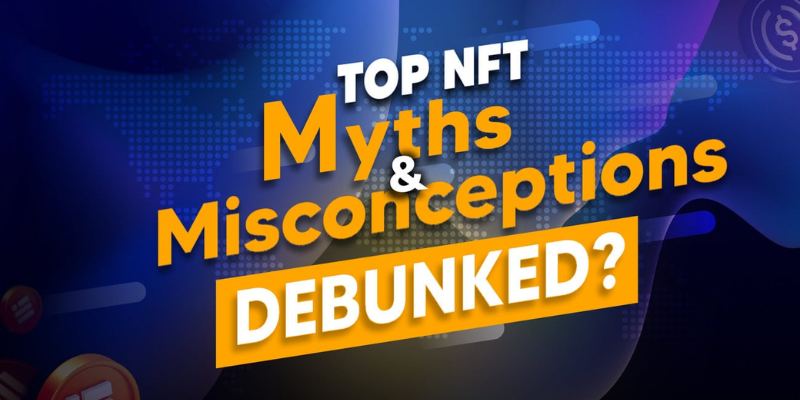The recent proliferation of NFTs and digital assets has given rise to a number of myths and misunderstandings. One might say that the industry’s complexity and the relatively high barrier to entry are largely to blame for the widespread stigma surrounding it.
To begin, we’ll define non-financial targets (NFTs). Non-fungible tokens, or NFTs, are unique digital assets, like rare paintings, whose ownership is verifiable through a blockchain network like Ethereum. Although most NFTs are currently stored on the Ethereum blockchain, it is essential to mention that Ethereum is not the only blockchain that can accommodate NFTs. Many other blockchain platforms, such as Zilliqa, Tezos, Solana, and Cardano, allow for the creation and trading of NFTs. Below are some myths and misconceptions that will be addressed.
Common NFT Myths
NFTs Have No True Value
One of the most common NFT myths is that NFTs have no real value and they are nothing more than a passing trend. NFTs are non-fungible, and only one person can have legal ownership of an NFT.
Since all transactions involving NFTs and digital assets take place on a distributed ledger called a blockchain, the true owner of any given NFT or digital asset is immutably recorded there. Therefore, any online copies or forgeries are precisely that: forgeries. An NFT can have multiple copies made, but there can only be one unique example of it.
Anything Sold As NFTs Is Always Digital Art
For now, NFT art sales are the ones that get the most attention in the mainstream media, primarily because of Beeple. The world became aware of NFTs after Christie’s sold Beeple’s “Everydays – The First 5000 Days” NFT for $69 million. The general public, however, incorrectly assumes that all NFTs are works of art on the basis of the fact that Beeple’s NFT is. However, the reality is that an NFT can digitally represent pretty much anything, not just artwork.
NFTs Are A Type Of Cryptocurrency
A widespread misunderstanding is that NFTs are a cryptocurrency. Both are built on blockchain technology, but their fungibility is what truly sets them apart. The only thing that can be exchanged for a cryptocurrency is another cryptocurrency or an asset with the same value. For instance, you can only buy and sell Ether (ETH), the cryptocurrency used by Ethereum, for other Ether or for another cryptocurrency with the same exact value. However, each NFT is irreplaceable because of its one-of-a-kind characteristics.
Nfts Grant You Rights To The Product
These are the sorts of catastrophic misunderstandings that need to be avoided at all costs. An anonymous NFT group called Spice DAO paid $3 million for a copy of a rare artbook of Jodorowsky’s Dune, thinking this would give them the rights to Dune’s intellectual property. The group’s grandiose plan to turn the book into NFTs ultimately fell flat, and this is why. While NFTs can serve as evidence of ownership, this does not imply the transfer of any copyright or other intellectual property rights (IPR). However, depending on the terms of the sale, you may acquire additional rights along with the NFT you purchase.
Takeaways
There is no escaping NFTs, and they are steadily gaining widespread acceptance in the cryptocurrency market. NFTs are becoming increasingly popular as their creators produce new ones every day. Still, it’s essential for crypto fans everywhere to keep up with developments in utility research to fully grasp the technology, its applications, and the long-term viability of the NFT market.

